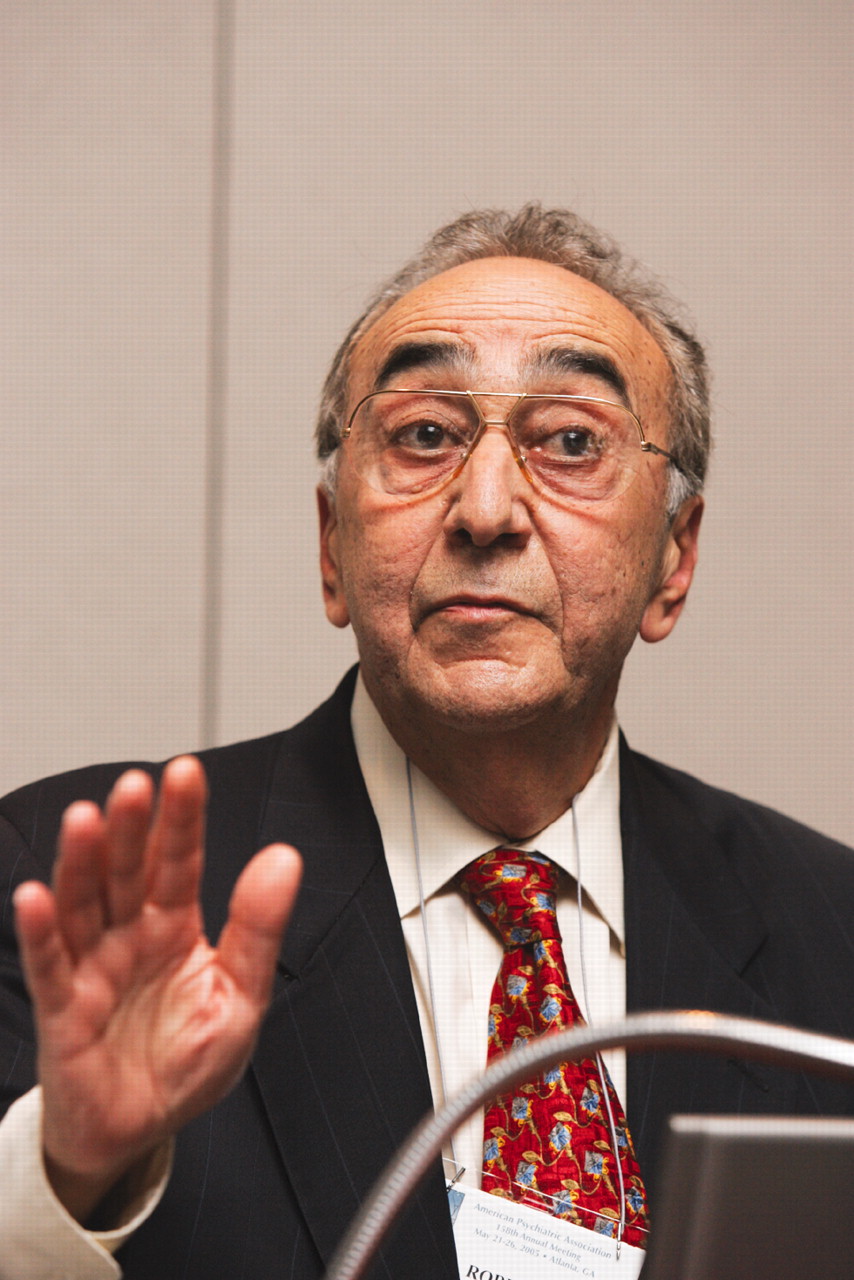There's no such thing as a suicidal patient, only a patient at risk for suicide, but assessing that risk takes more than a simple yes-or-no question, said Robert Simon, M.D., in accepting the Manfred S. Guttmacher Award at APA's annual meeting in Atlanta.
“If a patient wants to kill himself, the doctor is his worst enemy,” said Simon. Understanding patients and their risk and protective factors can provide clinicians with a more accurate understanding of that risk.
Presented for the first time in 1972, the Manfred S. Guttmacher Award honors outstanding contributions to the literature on forensic psychiatry. The award is co-sponsored by APA and the American Academy of Psychiatry and the Law. Simon was cited this year for his book Assessing and Managing Suicide Risk: Guidelines for Clinically Based Risk Management (American Psychiatric Press Inc., 2004). He was a co-recipient of the Guttmacher Award in 1993 with Robert Sadoff, M.D., for the book Psychiatric Malpractice: Cases and Comments for Clinicians, also published by American Psychiatric Press Inc.
Evaluating a patient's likelihood of committing suicide is critical for both patient and physician, said Simon. “Psychiatrists are sued more often, and damage awards are the highest, for suicide by their patients than for any other reason.”
A patient presenting in the emergency room who announces “I'm suicidal” may indeed be suicidal or may be looking for a warm bed on a winter night. Nonetheless, asking a direct question isn't enough. One case review found that 25 percent of people who committed suicide didn't admit suicidal ideation to their physicians, although they did tell their families.
A useful suicide-risk assessment is more complex, but represents a clinical mosaic identifying both modifiable risk factors and protective factors to inform treatment, said Simon. Support from significant others or having children under 18 years old in the home are important protective factors, he said. No absolute protective factor exists, however, and severity of mental illness can override such factors.
Most clinicians are aware of prodromal risk factors such as suicidal ideation or previous attempts. Treatable general risk factors include depression, anxiety, panic, impulsivity, sleep disorders, agitation, physical illness, drug side effects, family or work crises, or access to lethal means to carry out a suicide.
But Simon warns that patients may exhibit idiosyncratic warning patterns as well, recalling one patient who stuttered—except when he became suicidal.
“You have to know your patient, and it's hard to do that in a three- to five-day hospital admission,” he said. “It's important to know both your limitations and the areas where you have control.”
Simon offers a 30-second suicide risk alert for busy clinicians: severe agitation, insomnia, or panic attacks; suicidal ideation; suicide planning; prior attempts; hopelessness; substance abuse; or recent interpersonal loss.
“If you see any of these, take notice,” he said. “If you see two or more, do a full risk assessment.”
Suicidal ideation is always an important tip-off. Thirty-four percent of those expressing suicidal ideation plan a suicide attempt, and 72 percent who plan an attempt actually try to commit suicide. Thus a physician who spots suicidal ideation should treat the patient aggressively, since most patients who attempt suicide do so within a year of experiencing suicidal ideation.
So what should a doctor look for? Simon cited several crucial factors that can signal increased suicide risk:
•
Psychiatric comorbidities: Suicide is associated with all psychiatric disorders butis highest for patients with eating disorders. The key, he said, is not the type of disorder but the number of comorbid disorders.
•
Prior attempts: People who have already tried to commit suicide are 38 times more likely to die than the general population.
•
Family history: A Danish study found that adoptees who committed suicide had a six-times-greater suicide rate among their biological relatives than in their adoptive families. “Suicide is an independent variable for the transmission of psychiatric disorders,” Simon noted.
•
Life events: Patients with personality disorders often experience unhappy life events one week to three months prior to a completed suicide. Clinicians should ask about family discord, interpersonal loss, financial problems, and unemployment, for example.
•
Hopelessness: A score of 9 or higher on the Beck Hopelessness Scale identifies 94 percent of suicides but also has a 60 percent false-positive rate, so is not useful by itself. Many high-functioning people who are not used to being sick become hopeless when severely ill and present a high risk for suicide early in hospitalization.
•
Religion: Religious affiliation is associated with reduced suicidal behavior and may be a protective factor. But that is not absolute, said Simon.“ Suicidal religious persons could also believe that God has abandoned them.”
•
Impulsivity: This may be the most important risk factor, he said. Ask about reckless driving, alcohol or drug use, spending binges, destruction of property, and arrests. Consider also the stress of rejection, either real or perceived.
•
Psychosis: Having a severe psychiatric illness adds an extra burden of risk, given its demands on coping skills, but evidence shows no strong association with suicide. There is no difference in suicide attempts among persons with command auditory hallucinations compared with those without such hallucinations, but 80 percent of attempters had at least one suicide attempt in response to voices.
•
Guns: Ask about guns in the house and at work. Tell patients to remove any guns and follow up quickly by calling them to see whether they've done so. Asking patients to get rid of available guns is an important point often raised in litigation, said Simon. According to the November 18, 1999, New England Journal of Medicine, in the first week after the purchase of a handgun, the rate of suicide by purchasers was 57 times as high as the adjusted rate in the general population. Don't be misled by conventional thinking about who uses firearms. Half the women who kill themselves use guns.
•
Suicide prevention contracts: “There are no studies showing that they prevent suicide,” said Simon, who does not use them. He also warned that admitting a suicidal patient from the ER to the ICU is no guarantee of safety. Even with one-on-one observation or with 15-minute checks, there are many ways to kill oneself. Well-meaning staff may let the patient go to the bathroom unaccompanied. “There are lots of ways to kill oneself in the ICU,” said Simon. “Get them out of there and into the psychiatric ward.”
•
Psychotropic medications: “An anti-suicide drug specifically designed to reduce suicide attempts or completed suicides in suicidal patients does not exist,” said Simon. He cited studies that found lithium reduced suicide attempts in patients with unipolar depression or bipolar disorder, and clozapine reduced suicide attempts in patients with schizophrenia. “Do a careful review of all the patient's medications,” he said.
In short, said Simon: “Know thy patient.” Commit time and effort to the patient's care, he advised. Perform and document a suicide-risk assessment, then aggressively treat the patient for acute, modifiable risk factors. Mobilize the patient's protective risk factors, if any. Continue risk assessment over time, and evaluate the effectiveness of your interventions.▪

